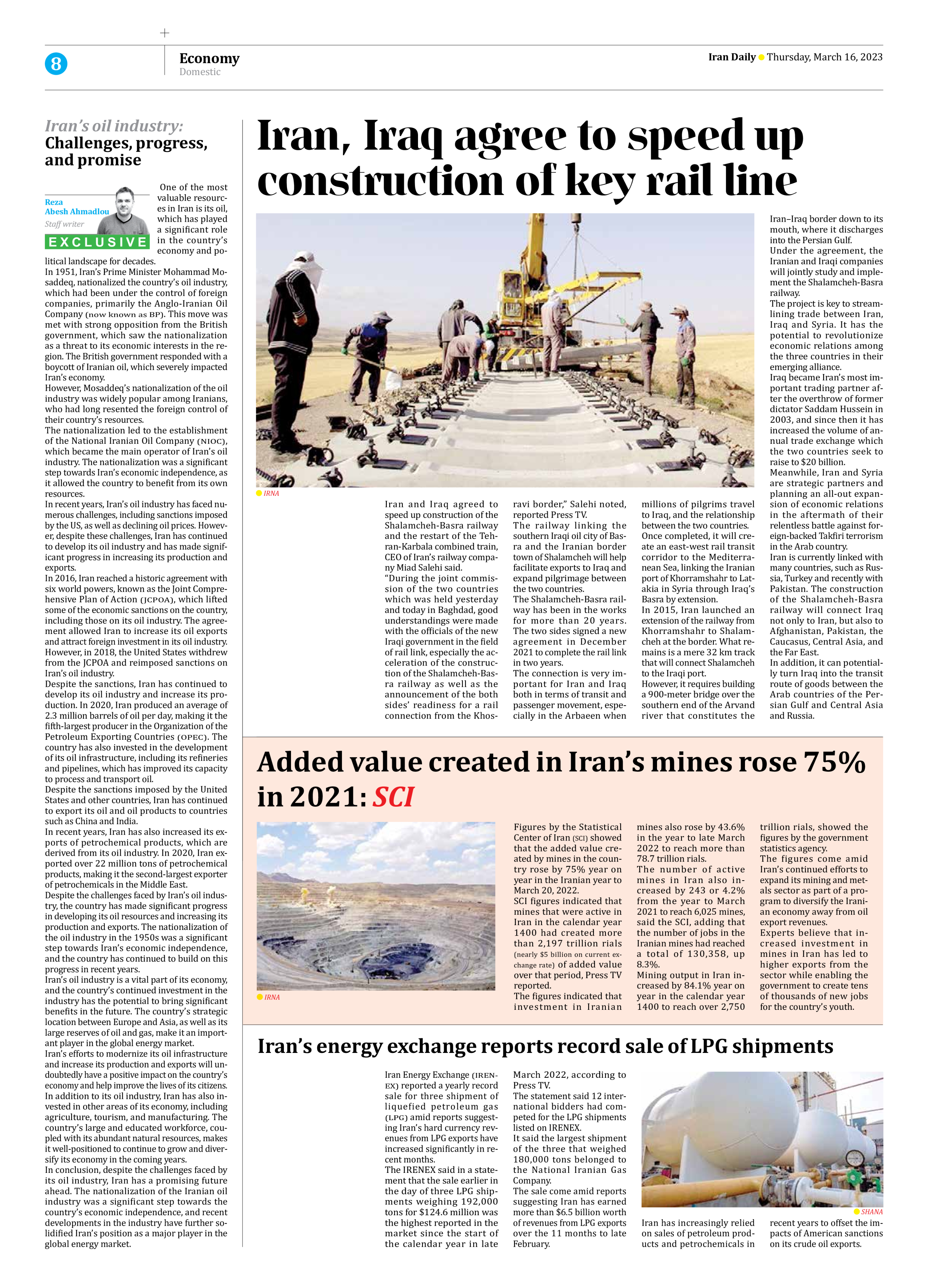
Iran’s oil industry: Challenges, progress, and promise
Reza Abesh Ahmadlou
Staff writer
One of the most valuable resources in Iran is its oil, which has played a significant role in the country’s economy and political landscape for decades.
In 1951, Iran’s Prime Minister Mohammad Mosaddeq, nationalized the country’s oil industry, which had been under the control of foreign companies, primarily the Anglo-Iranian Oil Company (now known as BP). This move was met with strong opposition from the British government, which saw the nationalization as a threat to its economic interests in the region. The British government responded with a boycott of Iranian oil, which severely impacted Iran’s economy.
However, Mosaddeq’s nationalization of the oil industry was widely popular among Iranians, who had long resented the foreign control of their country’s resources.
The nationalization led to the establishment of the National Iranian Oil Company (NIOC), which became the main operator of Iran’s oil industry. The nationalization was a significant step towards Iran’s economic independence, as it allowed the country to benefit from its own resources.
In recent years, Iran’s oil industry has faced numerous challenges, including sanctions imposed by the US, as well as declining oil prices. However, despite these challenges, Iran has continued to develop its oil industry and has made significant progress in increasing its production and exports.
In 2016, Iran reached a historic agreement with six world powers, known as the Joint Comprehensive Plan of Action (JCPOA), which lifted some of the economic sanctions on the country, including those on its oil industry. The agreement allowed Iran to increase its oil exports and attract foreign investment in its oil industry. However, in 2018, the United States withdrew from the JCPOA and reimposed sanctions on Iran’s oil industry.
Despite the sanctions, Iran has continued to develop its oil industry and increase its production. In 2020, Iran produced an average of 2.3 million barrels of oil per day, making it the fifth-largest producer in the Organization of the Petroleum Exporting Countries (OPEC). The country has also invested in the development of its oil infrastructure, including its refineries and pipelines, which has improved its capacity to process and transport oil.
Despite the sanctions imposed by the United States and other countries, Iran has continued to export its oil and oil products to countries such as China and India.
In recent years, Iran has also increased its exports of petrochemical products, which are derived from its oil industry. In 2020, Iran exported over 22 million tons of petrochemical products, making it the second-largest exporter of petrochemicals in the Middle East.
Despite the challenges faced by Iran’s oil industry, the country has made significant progress in developing its oil resources and increasing its production and exports. The nationalization of the oil industry in the 1950s was a significant step towards Iran’s economic independence, and the country has continued to build on this progress in recent years.
Iran’s oil industry is a vital part of its economy, and the country’s continued investment in the industry has the potential to bring significant benefits in the future. The country’s strategic location between Europe and Asia, as well as its large reserves of oil and gas, make it an important player in the global energy market.
Iran’s efforts to modernize its oil infrastructure and increase its production and exports will undoubtedly have a positive impact on the country’s economy and help improve the lives of its citizens.
In addition to its oil industry, Iran has also invested in other areas of its economy, including agriculture, tourism, and manufacturing. The country’s large and educated workforce, coupled with its abundant natural resources, makes it well-positioned to continue to grow and diversify its economy in the coming years.
In conclusion, despite the challenges faced by its oil industry, Iran has a promising future ahead. The nationalization of the Iranian oil industry was a significant step towards the country’s economic independence, and recent developments in the industry have further solidified Iran’s position as a major player in the global energy market.







